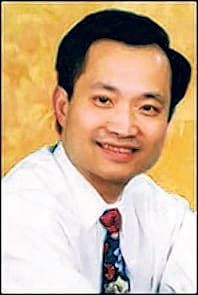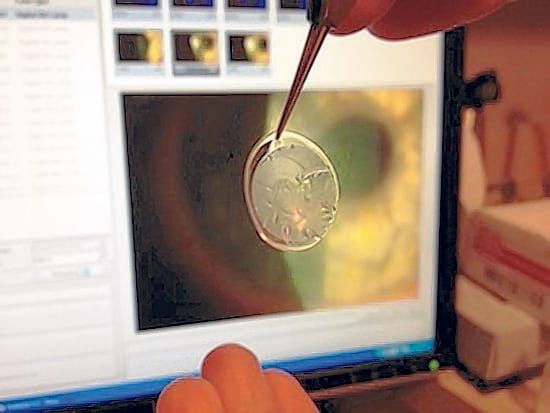How should we cope with apparent conflicts between faith and science? This issue was faced by Dr Ming Wang while investigating wound-healing in eyes. This account is adapted from his speech at the American Scientific Affiliation’s annual conference, on 20 July 2013, at Belmont University, Nashville, TN (www.thecollegefix.com/post/14052). I would like to share a story from my own career as a doctor and scientist. It’s a story of faith leading to discovery. My experience has proved to me that science and faith can find a way to work together.
Dilemma

The story begins when I was a medical student at Harvard Medical School and Massachusetts Institute of Technology (MIT), conducting research into how we, as doctors, can reduce corneal scarring following eye injury and, at the same time, restore sight. When an adult’s eye is injured, it heals slowly with a resultant corneal scar causing blindness. However, when a foetus’ eye is injured, it does something no adult human eye can do — it regenerates and heals without scarring! I really wanted to understand why a foetus has this amazing, scar-less healing ability, so we could apply it to children and adults and help their eyes heal without scarring, and thereby restore their sight. But, how could we understand foetal healing without actually harming the baby? Should we do the research without protecting the foetus, which is a human life? On the other hand, if we stood back and did nothing, we would never be able to understand the foetal wound-healing process. We could miss a chance to, literally, restore sight to the blind. The dilemma I faced as a medical researcher is a powerful example of the conflict that often rages between science and faith in our society today. Has God created such a seemingly contradictory world that conflicts between science and faith that can never be resolved? Or have we simply failed to see that following the Christian faith can actually point us in the direction of scientific discovery?
Solution
I realised that God wants us to believe in him, to believe the world he created is not contradictory, and that he has solutions that allow us to both advance science and also maintain ethical Christian principles. I realise too that God never says the pathway to truth is going to be easy or obvious. I persisted in this research, believing that God would find a solution for us, even though we may have to work hard to find it. I spent many days and nights in the laboratory, believing God would somehow open a door for us to continue foetal wound-healing research and still allow us not to har

m any part of the growing baby. Then we stumbled upon that unique piece of tissue, the amniotic membrane, which connects and surrounds the foetus. Remarkably, it has the same biological wound-healing property as the baby, but, it is not a part of a baby. Moreover, the amniotic membrane is usually discarded, along with the placenta, following the birth of the child. I went to an obstetric ward and started collecting amniotic membranes donated by mothers who had given birth, and I transplanted them onto injured eyes.
We recreated a foetal-like environment by placing the amniotic membranes on injured adult eyes. When we removed this ‘amniotic membrane tent’ from injured adult eyes, instead of finding scarred and blind eyes as in the past, we obtained clear eyes with vision! The adult eyes regenerated and healed without scarring, just as in a foetus. God had shown us the way to tap into the wound-healing power of the foetus and yet respect the value of every human life. We published the first scientific paper demonstrating this laboratory success for corneal scar reduction and restoration of vision, using amniotic membrane transplantation.
Christian incentive
Our research team celebrated this wonderful scientific discovery. But even more gratifying and important to me was the validation that God wants us as scientists to conduct research in a way that is moral and life-affirming. Ultimately, the principles of my Christian faith helped guide me toward a powerful medical discovery concerning foetal wound-healing — all without harming the baby! Following this discovery, we invented a non-surgical delivery system for the amniotic membrane — the Amniotic Membrane Contact Lens (AMCL). Now, 16 years later, the AMCL has become a commercially available product. Over 1000 US eye doctors have used it so that a large number of patients have had their sight restored. God is not an enemy of science. On the contrary, because he loves us, he wants us to conduct scientific research to improve the quality of our lives. However, he also wants us to do it in the right way — his way. So, following Christ can be a powerful doorway to scientific discovery!
Dr Wang is a prominent eye surgeon, with an MD from Harvard Medical School and a PhD in laser physics from MIT.






